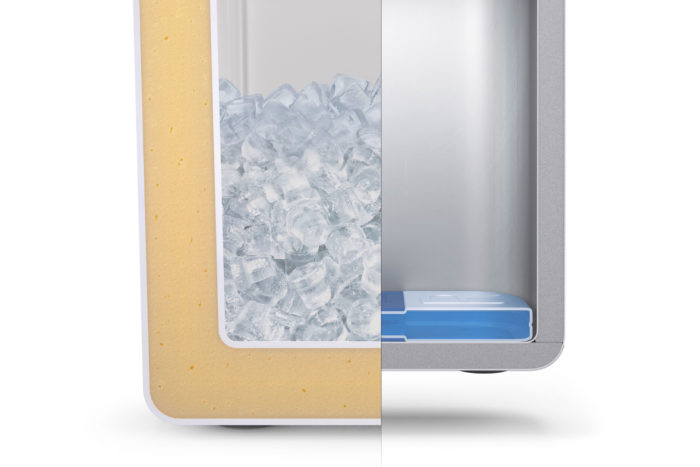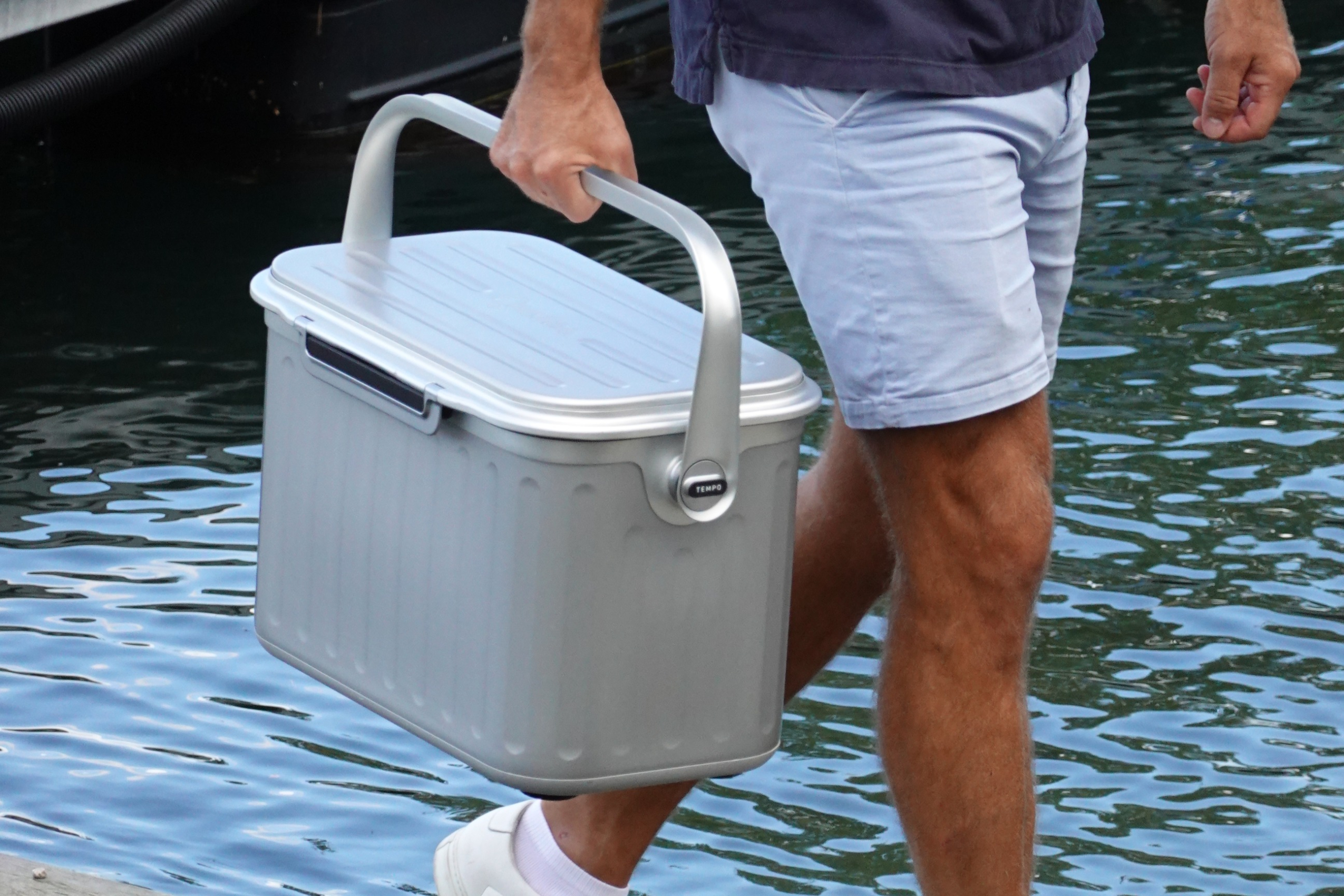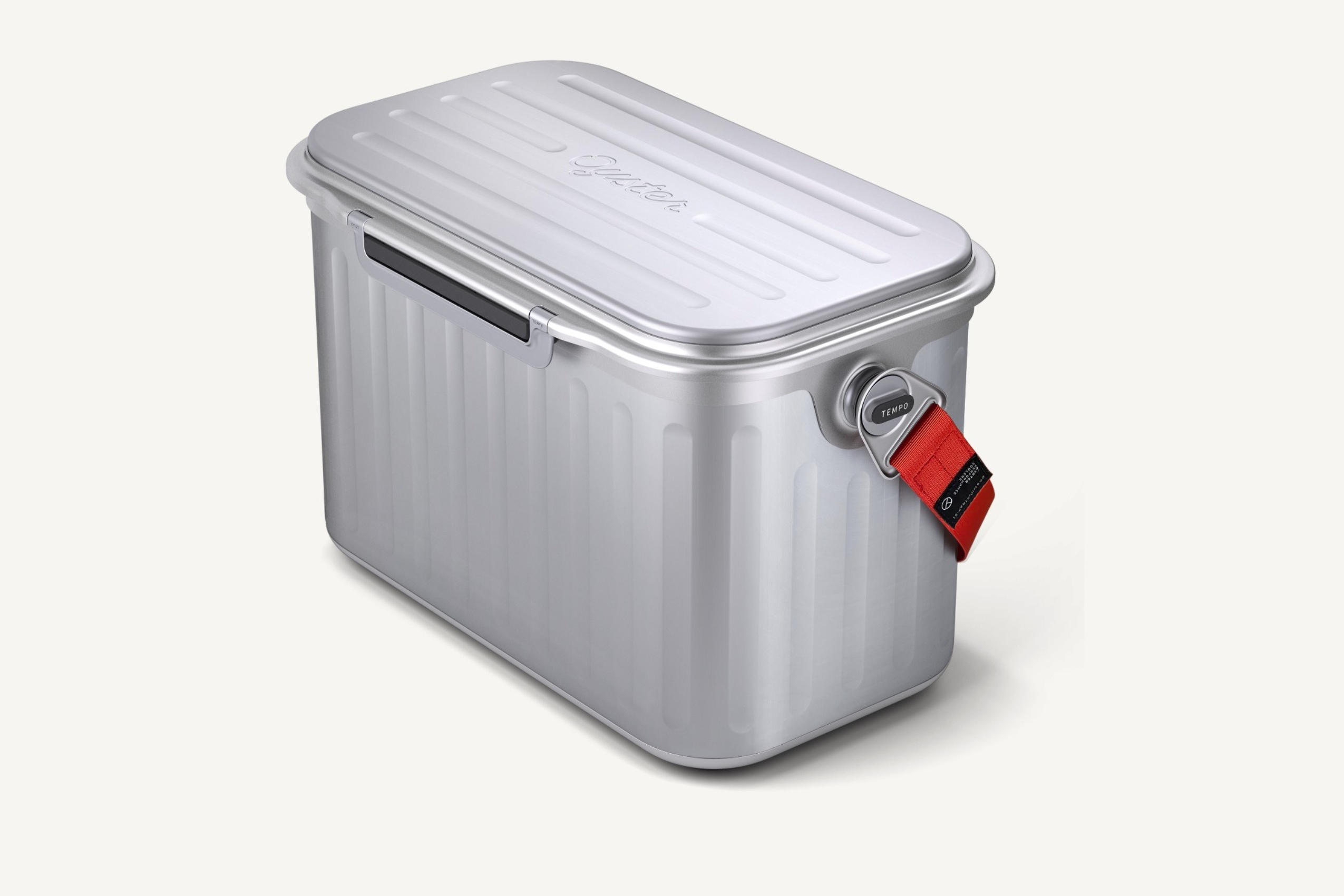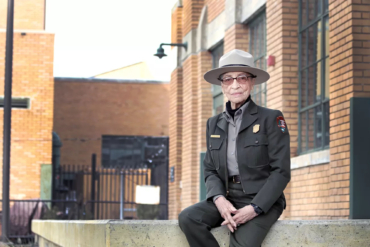Two things are true of nearly all coolers. One, they all require ice to maintain a low-enough temperature to keep their contents cold. And two, they’re bulky and often cumbersome.
Those are standard features that have plagued personal cold storage for years. But a Norwegian company called Oyster is trying to change that. Oyster’s Tempo cooler uses a patented double-wall vacuum insulation technology that it says requires no ice to stay cold. And it’s far more spatially efficient than the most popular coolers on the market today.
*And this is where our asterisk in the headline comes in. While that may be the case with already-cold contents, this is not a refrigerator or electric cooler. It will keep things at the temperature they begin at for a long time, or at least that’s the claim. And this claim relies on both the initial temperature of the food or beverage, plus how much volume it fills. Load it all the way with cold beer and you’re probably good for the day. Drop in one turkey sandwich with no other contents and you might be rolling the dice. We haven’t tested it yet, but hope to soon.
“We truly believe that we are revolutionizing temperature-sensitive storage with our technology,” Ian Sandmæl, Oyster Chief Design Officer and co-founder, told GearJunkie. And in doing so, it hopes to help solve challenges with food and medicine distribution worldwide.
The Tempo is Oyster’s inaugural product. It took the brand 6 years to develop and design it. So, what makes Oyster’s Tempo the world’s first “Performance Cooler”?
- External dimensions: W 19.4”, H 12.6”, D 11.6” (without handle)
- Internal dimensions: 24.3 qts. / 5 gals. / 36 beverage cans
- Weight: 12.3 lbs.
- First-edition MSRP: $605
Pros
- Maintains low temps with just freezer packs
- Lots of user-friendly features make it easy to use
- Less bulky than other premium coolers of similar size
- Great warranty
Cons
- No drain plug
- Aluminum handle prone to failure
- Expensive
The Oyster Tempo: Cooler Than the Rest
The idea behind the Oyster Tempo isn’t new. In fact, it’s over 100 years old. In 1892, Scottish scientist Sir James Dewar put a glass bottle inside another and sucked the air between them out, creating the world’s first vacuum-sealed thermos container.
Now, Oyster has taken that technology and made it bigger and more rectangular. The result is a cooler that is more thermally efficient than almost any other, it says — a performance cooler. The vacuum seal between the double walls of the tub and the top isolate and trap cold air within the container. Then the aluminum interior distributes the thermal energy evenly throughout the inside, Sandmæl explained.
“[That] removes the need for ice,” Sandmæl said. “You can use an ice pack or you can just put cold contents into the cooler and it will stay cold for a very long time.”
Why don’t regular coolers do the same? Because most hardshell coolers are made from plastic, using a rotomolded construction with polyurethane (PU) foam infused into it. They’re very rugged and durable like YETI or RovR. But they also require thick plastic walls. When you open up one of these coolers, you can see how beefy its walls are — and how much that limits the interior volume.
According to Oyster, the Tempo “delivers three times the internal space at nearly half the external size and stays three times colder for longer to deliver food-safe temperatures.”
How’s It Different?

Oyster isn’t the first cooler company to use double-walled vacuum-sealed construction. YETI introduced the V Series in 2019. At the time, it was the first vacuum-sealed cooler on the market.
However, the Yeti V series is made from stainless steel and PU foam. YETI inserts vacuum insulation panels into PU insulation to reduce the wall thickness and improve the performance of the V Series coolers. But it still uses PU foam, and according to Oyster, it isn’t a truly vacuum-sealed design.
Oyster’s Tempo cooler, by comparison, is made from recyclable aluminum with absolutely no PU foam. Between the double walls of its vacuum-sealed cooler is chemical-free silica, which is a nontoxic natural substance.
Sandmæl explains that Oyster also identified three key “thermal drivers” that set its design apart from any other comparable coolers out there. By optimizing core insulation, thermal bridge, and thermal conductivity, the Tempo stays many times colder than its competitors — without the need for ice, Oyster claims.
While the V Series has a larger capacity compared to the Tempo (it fits 96 cans of beer, compared to just 36), it also requires ice, which takes up its own volume. And at just 12.3 pounds, the Oyster Tempo weighs less than one-fifth of the YETI V Series (64 pounds).
Both coolers are expensive. The Tempo is available in the U.S. for $500, and the V Series is a whopping $800.
User-Friendly Features
In a market that’s as saturated as coolers are, you can’t just show up with a high-tech aluminum box and expect to catch attention. That’s why the team at Oyster designed this cooler with some very cool and unique user-friendly features.
The lid is fully removable for easy cleaning, and it also hinges on both sides, opening easily for easy access no matter what side of the cooler you’re on.
There are also two easily swappable handles for the Tempo. A quick-release button on either side makes it easy to switch between the nylon shoulder strap and a hard plastic handle, depending on how you want to carry the cooler.
And, of course, the materials used to build the Oyster Tempo are all fully recyclable, which gives them an eco-edge over a lot of manufacturers out there.
Where Can You Get One?
You can preorder your Oyster Tempo on the brand’s website. They’ll start shipping in late April.









